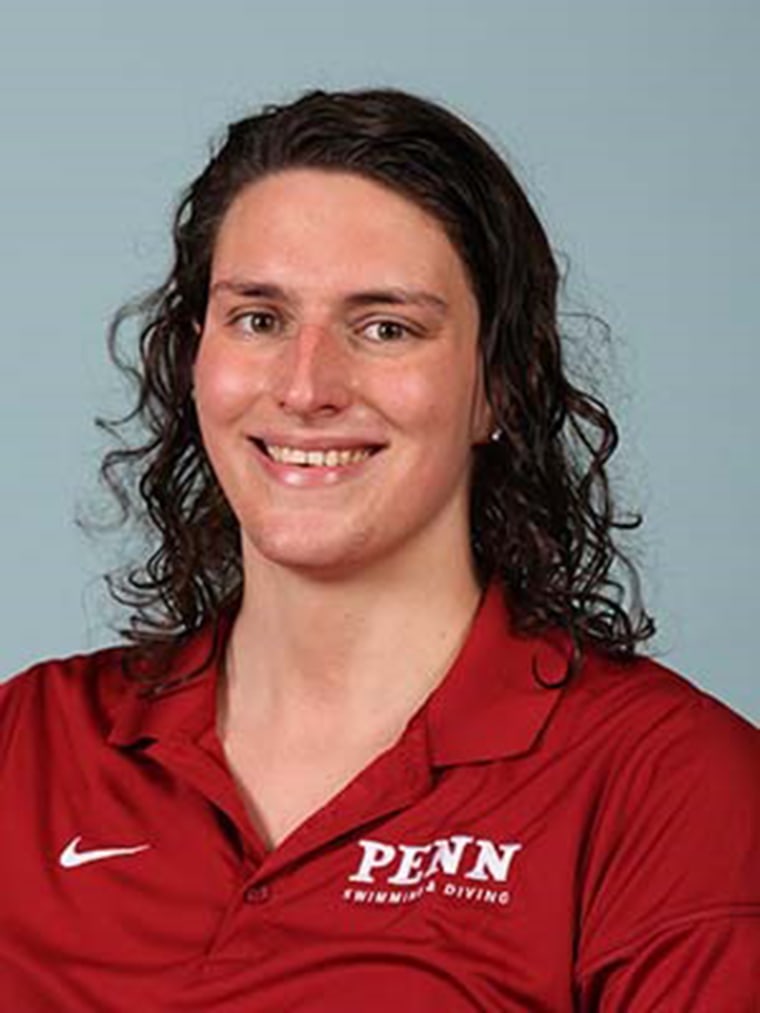University of Pennsylvania swimmer Lia Thomas, who has become central to the debate about transgender inclusion in competitive women’s sports, lost a race Saturday to Iszac Henig, a trans male swimmer at Yale University who swims on the women’s team.
In Penn’s last home meet of the season, against Yale University and Dartmouth College, Thomas won the 200-yard freestyle and the 500-yard freestyle, though Outsports reported that the margins of her wins were much smaller compared to her performance at the Zippy Invitational in Ohio last month.

At that meet, she set at least three records and won the 1,650-yard freestyle by 38 seconds, adding fuel to an ongoing debate about whether the NCAA’s guidelines for transgender athletes are strict enough to ensure fair competition between trans women and cisgender women (nontransgender women).
Though Thomas managed to win two events Saturday, she came in sixth in the 100-yard freestyle after competing head-to-head against Henig, a junior at Yale. Henig is eligible to compete on the women’s team as a trans man because he’s chosen not to receive gender-affirming hormones, also known as hormone replacement therapy, such as testosterone.
Guidance for transgender athletes issued in 2011 by the NCAA, which governs intercollegiate athletics, states: “Any transgender student-athlete who is not taking hormone treatment related to gender transition may participate in sex-separated sports activities in accordance with his or her assigned birth gender.”
When trans male athletes do receive testosterone as part of their transition, they are no longer eligible to compete on the women’s team and may compete on the men’s.
Henig came out as trans to his parents in April but decided to transition socially, a phrase that describes how some trans people change their names, pronouns and outward appearance to align more with their gender identity.
“As a student athlete, coming out as a trans guy put me in a weird position,” he told The New York Times for a June article about coming out during the pandemic. “I could start hormones to align more with myself, or wait, transition socially, and keep competing on a women’s swim team.”

He said he decided on the latter. “I value my contributions to the team and recognize that my boyhood doesn’t hinge on whether there’s more or less testosterone running through my veins,” he said. “At least, that’s what I’ll try to remember when I put on the women’s swimsuit for competition and am reminded of a self I no longer feel attached to.”
Henig has undergone a double mastectomy, also known as top surgery, but that doesn’t affect his eligibility to compete on the women’s team.
The NCAA guidance is similar for trans female athletes like Thomas, though it requires that trans women receive testosterone suppression treatment for at least one year in order to compete on women’s teams.
Thomas declined an interview but said on the podcast SwimSwam that she had been on hormone therapy for over 2 ½ years by the time she began competing on the women’s team in November.
In response to growing criticism of Thomas over the past few weeks, both the Ivy League and Penn released statements in support of her. Both cited the fact that Thomas has complied with and exceeded the NCAA guidelines.
But some critics say the guidance is the issue.
“A few years of testosterone blockers and estrogen doesn’t change the fact that she will have more powerful muscles, a larger heart and greater lung capacity than a biological woman,” Erika Brown, a two-time Olympic medalist in swimming, wrote on her Instagram stories last month, according to SwimSwam.
The science on whether trans female athletes have a competitive advantage over cisgender women is limited and mixed. Joanna Harper, a visiting fellow for transgender athletic performance at England’s Loughborough University who published the first performance analysis of trans athletes in 2015, told NBC News last month that trans women will maintain some advantages after hormone therapy, but every person is different.
“I have seen trans athletes who undergo transition — and either because they don’t adapt well to the change in their testosterone levels, or they had trouble with the medication, or perhaps their life focus changes somewhat — who are not nearly as successful after transition as they were before,” Harper said. “And we’re never going to hear in the media of those trans women who are less successful after transition than they were before because they’re not successful.”
She said the NCAA’s guidelines for trans female athletes is “perfectly reasonable” and that it “will result in meaningful competition between trans women and cis women.”
Some critics of the NCAA policy, including Nancy Hogshead-Makar, chief executive of women’s sports advocacy organization Champion Women, argue that there might be enough trans athletes in some sports to allow for a category just for trans people.
But Harper disagreed with that and noted that trans women are still greatly underrepresented in the NCAA. She said there are more than 200,000 women who compete in the NCAA every year, and trans people make up about 1 percent of the population. If they were proportionally represented in the NCAA, there should be about 2,000 trans women competing, but she estimated that there are less than 100 each year.
Advocates say much of the criticism of Thomas is rooted in transphobia and misinformation, fueled in part by an ongoing political debate. Last year, more than two dozen states considered bills that would ban trans student-athletes at the K-12 and college levels from playing on school sports teams that align with their gender identity, as opposed to their assigned sex at birth. Ten states — nine just last year — enacted such measures.
Joanna Hoffman, communications director at Athlete Ally, said transgender athletes deserve respect, kindness and equal access to sports.
“Both Lia and Iszac are in full compliance with NCAA guidelines for transgender athlete participation and have support from the Ivy League and their respective universities,” Hoffman said in an email. “To imply that there is a single magic bullet that guarantees success in any sport undermines hardworking, diligent athletes who have dedicated their lives to their sport. If we truly want to strengthen women’s sports, we need to address the documented challenges women athletes face: woefully unequal pay, lack of women in leadership positions at all levels of sport, uneven implementation of Title IX at institutions across the country, and rampant sexual harassment and abuse. Transgender women athletes are not and have never been a threat to women sports.”
